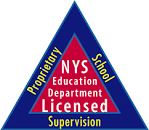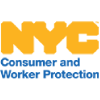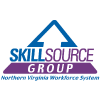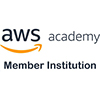
Professional Business Analyst (Multi-domains)
The Business Analyst course provides individuals with the essential skills and knowledge to analyze business needs, gather requirements, and facilitate effective communication between stakeholders in order to support successful project outcomes. This course covers topics such as requirements elicitation, documentation, analysis, and validation, as well as techniques for process improvement and stakeholder management. It equips students with the necessary tools and techniques to effectively identify and translate business requirements into functional solutions, ultimately enabling them to play a crucial role in bridging the gap between business objectives and technical implementation.
Why become a Business Analyst?
- Business Analysts' annual job market growth rate in the USA is 11%.
- Salary Range: $80,000 average, potential earnings above $150,000.
- Diverse Career Paths in technology, finance, healthcare, or as an independent consultant.
- Lack of Business Analytics skills costs the global economy $1.6 trillion annually.
- 83% of organizations credit business analysis for project success.
- 70% of organizations see Business Analysts for quick decision-making.
Intended Audience:
The Business Analyst course is designed for individuals who have an interest in analyzing and improving business processes, bridging the gap between business needs and technical solutions. This course is suitable for a wide range of professionals, including:
- Aspiring Business Analysts: Gain foundational knowledge, skills, and techniques for a successful career in business analysis.
- Business Professionals: Enhance skills across various business domains, identify challenges, improve processes, and contribute to organizational success.
- IT Professionals: Expand skill set, understand business requirements, and align technical solutions with business goals.
- Career Switchers: Transition into business analysis with a strong foundation in methodologies, techniques, and tools.
Prime Role of Business Analyst:
- Identify business and customer needs
- Analyzing and evaluating company’s current business processes and identifying areas of improvement.
- Understand the problem and recommend the solution
- Requirement Management - Functional & Non-Functional requirement
- Sign off/Approval
- UAT supervision.
- Become an SME for rest of the IT team.
Prerequisites:
Knowledge of Computer basics and Microsoft Office applications is good. Students should have at least a high school diploma or GED, along with good computer knowledge.
Course Duration:
4 Months Long Professional Course
MODULE - 1: Manual Testing (12 hours)
Manual Testing Modules:
- Software Development Life Cycle
- Testing Methodologies (Waterfall, RUP Iterative, Agile)
- Different Testing Types: System, Black Box, End-to-end, Integration, Beta, GUI, Load, Performance, Stress, Volume, Endurance, Regression, Smoke, Ad hoc, Functional, Positive, Negative, Usability, 508 Compliance, User Acceptance Testing
- Testing Methodology / QA Process
- Business Requirement Document (BRD)
- System Requirement Specification (SRS)
- Design Documents (DD)
- Design Mockup/ Wire frame/Prototype
- Requirement Assessment/Validation
- Documents: Test Strategy, Test Plan, PMP, CMP, SDP, RAR, TAR, LOE, Executive Summary, Test Cases, Test Scenarios etc.
- Manual Testing vs. Automation
- Risk Analysis
- IV & V
- Use Cases
- Requirement Traceability Matrix (RTM)
- Test Matrix
- Interview questions and answers discussion
- Written test
- Oral presentation test
MODULE - 2: System Development Life Cycle
System Development Life Cycle (SDLC) - (12 hours)
- Understanding concept of Business Modeling Requirement Gathering Analysis
- Design
- Implementation
- Testing
- Deployment
Software Development Standards
- Waterfall Method
- Spiral Model
- Rational Unified Process (RUP)
- Concepts of the RUP
- What is Iterative Development?
- Why Develop Iteratively? B
- enefits of an Iterative Approach
- Mitigating risks
- Accommodating changes
- Reaching higher quality
- Learning and improving
- Increasing reuse
- Develop iteratively
- Manage requirements
- Model visually
- Use component-based architectures
- Continuously verify quality
- Manage changes
- RAD methodology
- Object oriented analysis and design (OOAD)
- AGILE, XP Methodology
- Synchronize & Stabilize Methodology
- Prototype Model
- Comparison between Waterfall & RUP
- Artifacts Delivered at Each Phase of RU
SOX compliance
Industry basics: Health, Mortgage, Finance, Insurance, Pharmacy and their compliance needs
(HIPAA, SOX etc)
Six sigma
CMMI
Interview questions and answers discussion
Written test
Oral presentation test
MODULE - 3: Business Analysis & Requirement Gathering
Introduction to Business Analysis & Requirement Gathering Strategy - (48 hours)
- Role of a Business Analyst
- Gathering requirements
- Facilitating
- Conducting JAD sessions
- Meeting minutes
- Capturing requirements/decision
- Defect and change management
- Interviewing stake holders
- Negotiating with Business and IT
- Ingredients of a Business Analyst
- Structure of Development Team
- Position of a Business Analyst in the development team
- Software project Roles and responsibilities
- Responsibility Assignment Matrix
- Triple Constraint
- Initiation Phase deliverables
- Project Announcement
- Project Charter
- Communications Matrix
- Requirement Gathering Strategy
- Importance of Requirement gathering
- Requirement Gathering Techniques
- Different Types of Requirements
- JAD Session
- Role of a BA in JAD Session
- Preparing JAD Session Agenda
- How to conduct JAD session?
- Creating Functional Requirement Document
- Creating Software Requirement Specifications
- Gathering Functional Requirements - Business Analyst/Project
- Manager/Systems Analyst/Implementation Specialist
- Gathering Technical Requirements - Design documents
- Requirements Traceability Matrix
- Real world examples of Requirements
- Interview questions and answers discussion
- Written test
- Oral presentation
MODULE - 4: UML Methodology (30 hours)
- RUP
- Use Case Diagrams
- Activity Diagrams
- Sequence Diagrams
- State Chart Diagrams
- Understanding Use Cases
- Use Case Relationships
- Use Case Brainstorming
- Creating Use cases from Requirements
- Creating Use Case Narratives
- Change Management & Version Control Concept
- Defining Actors
- Define Use Cases
- Write Brief Description for each Use Case
- Step-by-Step Description of the Flow of Events for each Use Case
- Trace Requirements to Use Cases
- Interview questions and answers discussion
- Written test
- Oral presentation test
MODULE - 5: Deliverables / Documentation (12 hours)
- Project schedules
- Scope document
- Business Requirements
- Architecture diagrams
- Process maps
- Technical Requirements
- UML diagrams and Notation (Use case, State Transition, Collaboration, Deployment,Package, Class, Activity, Sequence diagrams)
- Use cases and Collaboration Case description
- Supplemental specifications (Screen, Report, Interface mockups and Screen flow diagrams)
- Report and interface requirements
- Application Contingency Plan
- Security management plan
- Business Recovery Plan
- Test plans and Test cases
- Traceability matrices
- Interview questions and answers discussion
- Written test
- Oral presentation test
MODULE - 6: Quality Center / TestDirector
Quality Center /TestDirector - (24 hours)
- As a Site Administration
- Create Domain, Project, Users, Project Admin
- Assign users to the projects
- Configured Wait_Before_Disconnect feature
- Configure mail interval, mail format, version control settings
- As a Project Administrator
- Setup/assign user to the project
- Assign role/privilege to the user
- Created new users for project
- Set-up groups/create new group role
- Changed permission of the new role
- Add users to the new role
- Customized project entities
- Defect field customization i.e. making a field as a required field
- Create new user field i.e. test environment (DEV, ALPHA, BETA, PROD, QUAL) in defect window.
- Requirement field customization i.e. making a required field
- Requirement field customization like modified requirement type from the default (Hardware, Software) to Functional, Non-Functional, System Change Request etc.
- Configuring mail
- As a User
- Enter requirements in the requirement section.
- Prepare excel sheets for require to export in the requirement field
- Export requirement to export in the requirement folder
- Convert requirements from the requirement section to test in the test plan section
- Develop design steps or test cases in the test plan section
- Attach the screenshot for the steps, if necessary.
- Create template for the common steps
- Call template to the tests
- Calling a manual test with parameters
- Perform requirement coverage or linking one test case to one requirement in the Test Plan section or performing requirement traceability
- Perform requirement coverage or linking one test case to many requirements in the Test Plan section or performing requirement traceability
- Create test sets in the test lab section
- Import test cases in the test set
- Execute test sets in the test lab section
- Log defect in the test lab section
- Log defect in the Defect section
- Attach the screenshot for the defect
- Track/ filter defect in the defect section
- Enter comment in the comment section after retesting the bug like 'retest passed' recommending to close this defect or retest failed, recommending to re-open
- Generate graph and reports in the Requirement, Test plan, Test Lab & Defect section
- Schedule automated test to execute or running automated test scripts in batch mode
- Create and automated QTP scripts using TestDircetor or Quality center
- Test using QTP (Quality Test Professional)
- Interview questions and answers discussion
- Written test
- Oral presentation test
MODULE - 7: Rational Requisite Pro (6 hours)
- Detailing a Business Use Case Using Rational RequisitePro
- Capturing a Common Vocabulary Using Rational RequisitePro
- Setting Up Rational RequisitePro for a Project
- Developing a Vision Using Rational RequisitePro
- Eliciting Stakeholder Requests Using Rational RequisitePro
- Detailing a Use Case Using Rational RequisitePro
- Managing Dependencies Using Rational RequisitePro
- Reviewing Requirements Using Rational RequisitePro
- Baselining a Rational RequisitePro Project
- Viewing Requirement History Using Rational RequisitePro
- Adding Templates to Your Rational RequisitePro Project
- Archiving Requirements Using Rational RequisitePro
- Interview questions and answers discussion
- Written test
- Oral presentation test
MODULE - 8: Rational ClearQuest (6 hours)
- Creating Multiple Sites Using Rational ClearQuest
- Defining Change and Review Notifications Using Rational ClearQuest
- Establishing a Change Request Process Using Rational ClearQuest
- Reporting Defect Trends and Status Using Rational ClearQuest
- Reporting Review and Work Status Using Rational ClearQuest
- Submitting Change Requests Using Rational ClearQuest
- Viewing the History of a Defect Using Rational ClearQuest
- Interview questions and answers discussion
- Written test
- Oral presentation test
MODULE - 9: Rational Quality Manager (6 hours)
- Performing Test Activities Using Rational Quality Manager
- Implementing an Automated Test Suite Using Rational Quality Manager
- Executing a Test Suite Using Rational Quality Manager
- Creating Performance Test Suites with Rational Quality Manager
- Creating a Test Case Using Rational Quality Manager
- Creating a Test Plan Using Rational Quality Manager
- Interview questions and answers discussion
- Written test
- Oral presentation test
MODULE - 10: Rational Rose (6 hours)
- Finding Actors and Use Cases Using Rational Rose
- Detailing a Use Case Using Rational Rose
- Structuring the Use-Case Model Using Rational Rose
- Capturing the Results of Use-Case Analysis Using Rational Rose
- Creating Use-Case Realizations Using Rational Rose
- Documenting the Deployment Model Using Rational Rose
- Documenting the Process View Using Rational Rose
- Managing Classes Using Rational Rose
- Managing Collaboration Diagrams Using Rational Rose
- Managing the Design Model Using Rational Rose
- Managing Interfaces Using Rational Rose
- Managing Sequence Diagrams Using Rational Rose
- Managing Subsystems Using Rational Rose
- Structuring the Implementation Model Using Rational Rose
- Reverse-Engineering Code Using Rational Rose
- Designing and Modeling Databases Using Rational Rose Data Modeler
- Setting Up Rational Rose for a Project
- Accessing Rational ClearCase from Rational Rose
- Comparing and Merging Rational Rose Models Using Model Integrator
- Publishing Web-based Rational Rose Models Using Web Publisher
- Generating Elements from a Model Using Rational Rose
- Interview questions and answers discussion
- Written test
- Oral presentation test
MODULE - 11: MS Visio (12 hours)
Introduction to Visio
- What is Visio?
- Available Versions
- Tied to the Web
- Extending Visio
- Requirements
- Installing Visio S
- ection Review
Core Components of Visio
- Shapes
- Stencils
- Templates
- Pages
- Layers
- Visio Tour
- Help System
- Section Review
How to Create Diagrams
- Creating a New Diagram
- Choosing Stencils & Shapes
- Adding Shapes
- Formatting Shapes
- Connecting Shapes
- Text
- Hyperlink
- Section Review
Custom Properties
- Custom Properties
- Custom Property Sets
- Reports
- Section Review
- Sharing/Saving & Printing
- Sharing Your Visio Files
- Using Visio Shapes Elsewhere
- Create Visio Diagrams Elsewhere
- Bringing Other Objects into Visio
- Saving
- Printing Section Review
Templates
- What are Templates?
- Template Categories
- Using Templates
- Creating Templates
- Section Review
Diagrams and Drawings
- Block Diagrams
- Building Plans
- Maps
- Section Review
Business Templates
- Brainstorming
- Business Process Diagrams
- Building Plans & Charts/Graphs
- Flow Chart
- Network Diagrams
- Organization Charts
- Project Schedule
- Section Review
Software & Databases
- Database - What is it?
- Flowcharts & Software Diagrams
- Web Diagrams
- Section Review
Professional Templates
- Electrical Engineering
- Mechanical Engineering
- Process Engineering
- Section Review
Shapesheets
- Shapesheets
- Shapesheets Concept
- Shapesheet Formulas
- Managing Shapesheets
- Section Review
Shapes
- Shapes
- Shape Operations
- Shape Groups
- Styles
- Patterns
- Section Review
Visio Automation
- Automation Services
- Smart Shapes
- Macros
- Visio SDK
- Section Review
- Interview questions and answers discussion
- Written test
- Oral presentation test
MODULE - 12: MS Project
Getting Started with Microsoft Project
- Explore the Microsoft Project 2007 Environment
- Display an Existing Project Plan in Different Views
Creating a Project Plan
- Create a New Project Plan
- Assign a Project Calendar
- Add Tasks to the Project Plan
- Enter the Task Duration Estimates
- Add Resources in the Project Plan
Managing Tasks in a Project Plan
- Outline Tasks
- Add a Recurring Task
- Link Dependant Tasks
- Set a Constraint to a Task
- Set a Task Deadline
- Add Notes to a Task
Managing Resources in a Project Plan
- Create a Resource Calendar
- Assign Resources to Tasks
- Assign Additional Resources to a Task
- Enter Costs for Resources
- Enter Values for Budget Resources
- Resolve Resource Conflicts
Finalizing the Project Plan
- Display the Critical Path
- Shorten the Project Duration
- Set a Baseline
- Print a Project Summary Report
Exchanging Project Plan Data with Other Applications
- Import Project Information
- Export Project Plan Data into Excel
- Copy a Picture of the Project Plan Information
Updating a Project Plan
- Enter Task Progress
- Enter Overtime Work
- Split a Task
- Reschedule a Task
- Filter Tasks
- Set an Interim Plan
- Create a Custom Table
- Create a Custom Report
Managing Project Costs
- Update Cost Rate Tables
- Group Costs
- Link Documents to a Project Plan
Reporting Project Data Visually
- Create a Visual Report
- Customize a Visual Report
- Create a Visual Report Template
Reusing Project Plan Information
- Create a Project Plan Template
- Create a Custom View
- Make Custom Views Available to Other Project Plans
- Share Resources
- Create a Master Project
Using Microsoft Project to create a real-life project schedule
Estimating a software project
FPA - Function Points Analysis
WBS (Work Breakdown structure)
Estimating Task Duration
Project Schedule
Scope change management
Configuration management
Intro to XML, Schemas, DTDs. - Use of XML Spy
Interview questions and answers discussion
Written test
Oral presentation test
MODULE - 13: Comprehensive Interview Training (32 hours)
Our comprehensive Interview training will prepare you for any kind of job. 1:1 interview session, evaluation, improvement plan and follow up will boost your confidence and knowledge drastically. You will be an expert on all tips and techniques, mistakes people usually make, formulating best answers and dealing with difficult situation etc. It will also significantly improve your speech/presentation skill.
- Typical Interview Format Discussion
- Phone/Onsite Interview
- The tricks and techniques of successful interview
- What the Interviewers are looking for
- Questions to ask during Interview
- DOs and DON?Ts for the interview
- The 100 most commonly asked questions during any interview
- Personal 1:1 interview practice and coaching: Individual secret personal evaluation and recommendation
- How to write a professional, eye catching resume and cover letter
- How to search and apply for jobs online
- Interview Success Product (Books, CDs)
- Researching Potential Employees
- Interview Follow up/Thank You Letters
- Interview questions and answers discussion
- Written test
- Oral presentation test
MODULE - 14: Real-Time Project Based Workshop and Presentation
Each student will be required to complete a real-time project that covers the entire course curriculum as listed below. When their project is successfully completed, each student will then make a formal presentation of their entire work over 12 hours to an audience of fellow students under the supervision of the course instructor. The presentation will be conducted in three separate four-hour sessions. Each student is also required to attend an additional 36 hours participating as an audience member while their fellow student(s) are presenting their projects.
- Requirement writing
- Requirement Validation using SMART Criteria
- Generating Requirement Analysis Report (RAR)
- Creating Level of Efforts (LOE)
- Estimating a software project, WBS (Work Breakdown structure), Estimating Task Duration & Project Schedule using Microsoft Project
- Creating Use Case, State Transition, Collaboration, Deployment, Package, Class, Activity, Sequence diagrams using Rational Rose
- Creating Test Plan , then Check In to the Shared Folder using Microsoft SharePoint
- Creating Domain, Project, Project Admin, User using Quality Center
- Importing Requirements using Quality Center
- Importing Requirements using Rational RequisitePro
- Creating a Bug Life Cycle Diagram using MS Visio
- Writing Test cases for Functional, Positive, Negative, Equivalence Partitioning, Integration, Database Testing, covering Traceability Matrix
- Selecting right candidate for Smoke Testing and executing test cases
- Executing Test Cases for Functional, Positive, Negative, Equivalence Partitioning, Integration, Database Testing
- Logging defects, assigning defects to the developers, demonstrating full Bug Life Cycle, generating graphs and reports using Quality Center/ Clear Quest
- Creating Test Analysis Report (TAR)
- Creating an Executive Summary for the test
- Writing a Traceability Matrix for Requirements, Test Cases and Defects
- Creating Release Notes, then Check In to the Shared Folder using Microsoft SharePoint
- Creating User Manual , then Check In to the Shared Folder using Microsoft SharePoint
- Creating a Post Mortem Reports , then Check In to the Shared Folder using Microsoft SharePoint
- Creating Application Contingency Plan, Security management plan, Business Recovery Plan, Project Management Plan (PMP), Configuration Management Plan (CMP), Software Development Plan (SDP)







